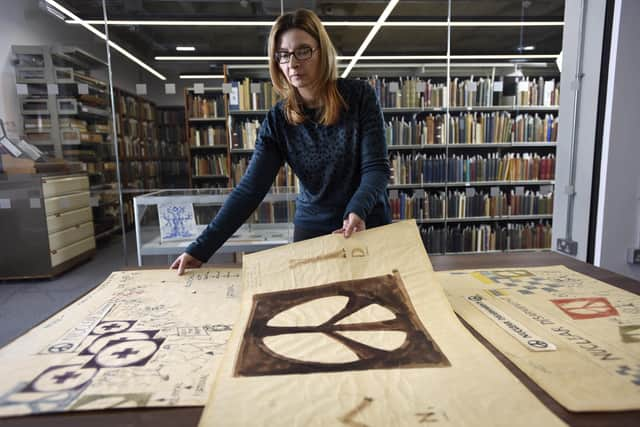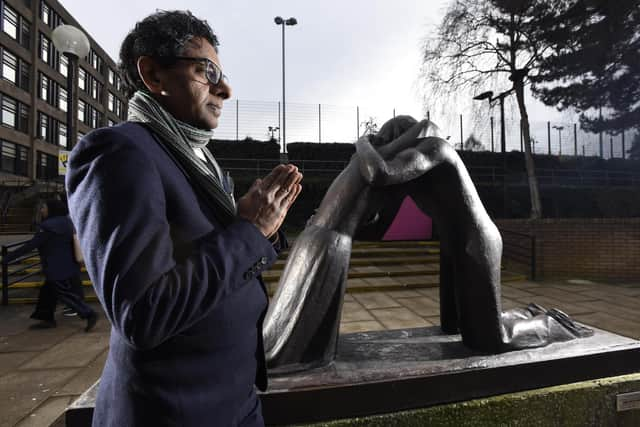How simple sketches in the archives at University of Bradford came to create the peace sign
Now, this 50th year since the foundation of the university's peace studies department, experts say they are as poignant a marker in war and conflict as they have ever served to be.
These original 'doodlings' for what was to become the international peace symbol were first created by Gerald Holtom in 1958 and were used publicly on March 1 of that year.
Advertisement
Hide AdAdvertisement
Hide AdOriginally, they were for a CND symbol – the Campaign for Nuclear Disarmament in the UK - and used in protests nationwide against the use of nuclear weapons.


Emeritus Professor Peter van den Dungen, a renowned historian of peace, said: "The symbol has become world famous as the peace symbol. These original sketches, made by the artist Gerald Holtom, are the crown jewels of the Commonweal Peace Library in the JB Priestley Library."
Prof van den Dungen worked at the Department of Peace Studies and International Development (PSID) for over 30 years. With the Russian invasion of Ukraine, and ongoing conflict in Gaza, this symbol of peace seems as poignant today as it did when more than half a century ago, he said.
He added: “The relevance of this particular symbol for the Russian war against Ukraine concerns the danger that the war could escalate into a nuclear war given the repeated warnings of the Russian president that he would use nuclear weapons if the need would arise to safeguard Russia’s claims in Ukraine."
Advertisement
Hide AdAdvertisement
Hide AdThis anniversary year for the Peace Studies Department has also seen the rededication of a restored statue by Josefina de Vasconcellos outside the JB Priestley Library.


Depicting two figures embracing, it was originally called ‘Reunion’ and was meant to show a husband and wife after the Second World War. It was later renamed ‘Reconciliation', with the figures in the sculpture as metaphors for nations coming together.
Now, with the original peace sign designs belonging to the Commonweal Library, they are also cared for by the University of Bradford.
Many might recognise the symbol but Holtom’s drawings show its evolution, which he said is “representative of an individual in despair, with hands palm outstretched outwards and downwards in the manner of Goya’s peasant before the firing squad.”
Advertisement
Hide AdAdvertisement
Hide AdThe symbol also has the semaphore signals for letters N and D, for nuclear disarmament. Holtom formalised the sketch and put a circle around it, thinking it “a puny thing”.
It wasn’t until after it's adoption by CND that he realised if the symbol was inverted, it could be seen in a more positive way, as a "tree of life” or symbol of "hope and resurrection”.